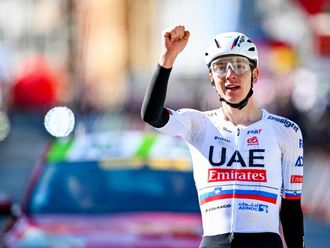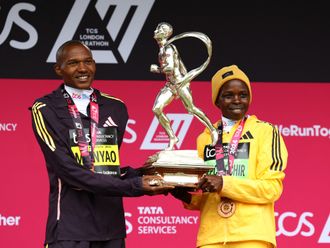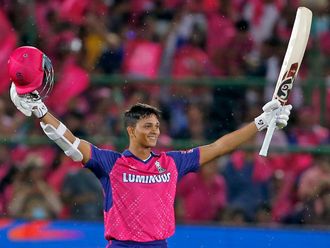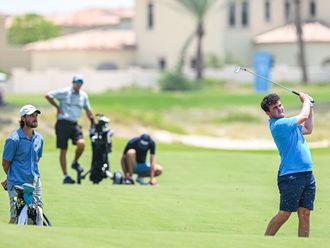Dubai: Motorists in Dubai puzzled at the sight of a lone cyclist guarded by a police escort needn't be concerned at all. It is just all in a day's work for Paul Hodgson as he measures the route for the 2008 Standard Chartered Dubai Marathon, the world's richest ever athletics road race.
With world record marathon prize money of $1 million at stake and a further bonus of $1 million for a world record at the January 18 race, there must be no margin for error in terms of every inch of the classic 26 miles, 385 yard distance.
And for Hodgson - a Grade 'A' Course Measurement official with the Association of International Marathons and Road Races (AIMS) - this means covering the entire route on his hi-tech bicycle calibrated with a Jones Counter, the sole measuring instrument recognised by the International Association of Athletics Federations (IAAF).
"Every road race event that wants to be taken seriously has to be measured to the very last inch," said Hodgson. "No matter where in the world the race is held, the same standards of accuracy apply and an Accredited Course Measurement Official must measure the route using recognised course measurement procedures."
Even with so much money and prestige at stake, Hodgson is quick to emphasise that this 37-year-old method of measurements remains the best and most accurate. "Despite modern technology, the range of sophisticated electronic instruments now available provides spurious data," he added. "Even the advent of hi-tech Global Position Systems (GPS) has failed to provide the required standard of accuracy. Modern hand-held devices can locate your position on the surface of the earth to within five square metres, but for measuring distance, they are no more accurate than a measuring wheel."
The January event will see world record holder Haile Gebrselassie lead the largest field ever seen in a Middle East marathon.
"Interest in the race is ahead of the normal figures, which is understandable," said Event Director Peter Connerton.












